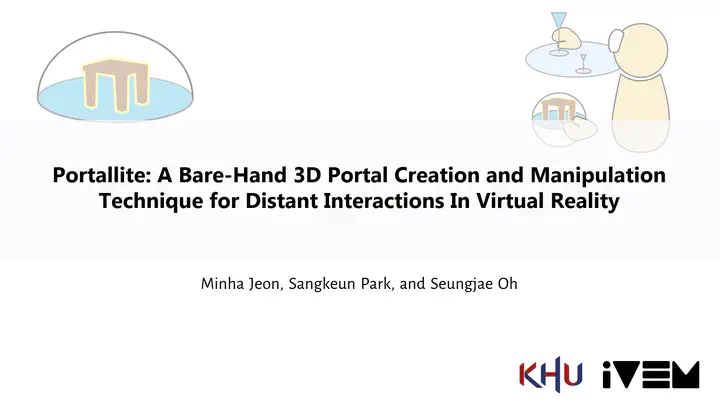Portallite: A Bare-Hand 3-D Portal Creation and Manipulation Technique for Remote Object Interactions in Virtual Reality

Abstract
Interaction with objects beyond an arm’s reach is a challenging task in virtual reality (VR). Ray-casting is often used to solve this problem, but it still has limitations when targeting areas that the ray cannot reach. To address this issue, the concept of a portal, which allows close access to a distant area, has been investigated. In this study, we introduce Portallite, an interaction technique that allows users to easily create and control 3D portals. We offer a world-in-miniature map with satellites above it as a metaphorical representation, where the position and height of the satellites represent the location and size of portals in a virtual environment. Users are able to interact with the interaction proxies, a map and satellites, using their hands. This interaction metaphor allows them to exploit the spatial relationship between the map and satellites through vision and proprioception. We conduct a user study to evaluate Portallite for portal creation and subsequent object manipulation tasks in comparison with other bare-hand interaction techniques for 3D portals. The results demonstrate that Portallite offers advantages in terms of speed, accuracy, and reduced cognitive workload.